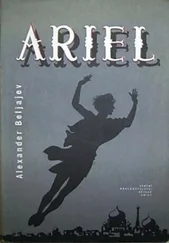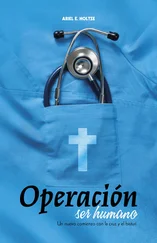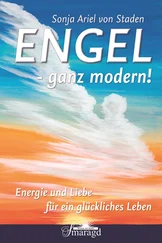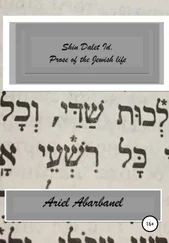Ariel Toaff - Blood Passover
Здесь есть возможность читать онлайн «Ariel Toaff - Blood Passover» весь текст электронной книги совершенно бесплатно (целиком полную версию без сокращений). В некоторых случаях можно слушать аудио, скачать через торрент в формате fb2 и присутствует краткое содержание. Жанр: Религиоведение, на английском языке. Описание произведения, (предисловие) а так же отзывы посетителей доступны на портале библиотеки ЛибКат.
- Название:Blood Passover
- Автор:
- Жанр:
- Год:неизвестен
- ISBN:нет данных
- Рейтинг книги:3 / 5. Голосов: 1
-
Избранное:Добавить в избранное
- Отзывы:
-
Ваша оценка:
- 60
- 1
- 2
- 3
- 4
- 5
Blood Passover: краткое содержание, описание и аннотация
Предлагаем к чтению аннотацию, описание, краткое содержание или предисловие (зависит от того, что написал сам автор книги «Blood Passover»). Если вы не нашли необходимую информацию о книге — напишите в комментариях, мы постараемся отыскать её.
Blood Passover — читать онлайн бесплатно полную книгу (весь текст) целиком
Ниже представлен текст книги, разбитый по страницам. Система сохранения места последней прочитанной страницы, позволяет с удобством читать онлайн бесплатно книгу «Blood Passover», без необходимости каждый раз заново искать на чём Вы остановились. Поставьте закладку, и сможете в любой момент перейти на страницу, на которой закончили чтение.
Интервал:
Закладка:
The first group of "Roman" Jews, i.e., Jews of Italian origin, flowing into the centers of the plane of the Po from their preceding seats in the Patrimonio of San Pietro, in Umbria, in the Marca d'Ancona, in the Lazio and in Campagna to carry on the authorized money trade, i.e., regulated by permits, did not reach these regions simultaneously with the arrival in those regions of the German transalpine Jews, active in the same profession. They in fact preceded them by several decades. The first Jewish money lenders at Padua and Lonigo, in the Vicentino region, were Italians, and initially settled there between 1360 and 1370. Jews of German origin only reached the region in consistent numbers at a later time, at the end of the century, and, in particular, at the beginning of the 15th century [50] Cfr. A. Toaff, Convergenze sul Veneto di banchiere ebrei romani e tedeschi nel tardo Medioevo , in Cozzi, Gli ebrei e Venezia , cit., pp. 595-613. See also Ph. Braunstein (ibidem, p. 690), which accepts my own conclusions as stated above.
. A comparison of the clauses of the permits granted to the German Jews compared to those granted to the Italian Jews, often active in the same areas, reveals obvious traces of profound differences in religious usage and mentalities, sediments of particular and diverse historical experiences. The attitudes and ceremonial components, the fears and mistrust, the sense and dimension of life, the relations with the surrounding Christian society of these German Jews, immersed in the new Italian reality in which they felt profoundly foreign, remained influenced and marked by their experiences in the Germanic world from which they originated, and which they had only left physically.
The principal concern of these immigrants seemed to be, understandably, that of ensuring their physical safety p. 27]
and the protection of their property against the dangers represented by a surrounding society which considered them treacherous and potentially hostile. Almost obsessively, the chapters of the permits repeatedly mention the exemplary punishments to be threatened to anyone causing damaging or injury to the Jews, or subjecting them to trouble or vexations. The permit granted by the municipality of Venzone to the money lender Benedetto of Regensburg in 1444 contained the condition that wet nurses and Christian personnel in the service of the Jews were not to be molested or offended, nor could they be made to work on Sunday or the feast days of the Christian calendars [51] Cfr. M. Lucchetta, Benedetto Jew of Ratisbona de fu maestro Josef banchiero pubblico di Venzone , Udine, 1971. See also M. Davide, La communità ebraica nella Venzone del Quattrocento , in "Ce fastu", LXXX (2004), pp. 167-186.
. The transalpine Jews were particularly sensitive to the possibility of being falsely accused and, in consequence, of suffering from legal proceedings and expropriations, as shown by their preceding experience in the German territories, the scars of which they still bore. In 1414, Salomone da Nuremberg and his companions requested and obtained a concession from the government of Trieste stating that, if Jews accused of any crime or offense before the judges of that city would not be subjected to torture to extort confessions without at least four citizen witnesses, trustworthy and of good reputation, against them [52] Cfr. M de Szombathely, Libro delle Riformazioni or Libro dei Consigli (1411-1429), Trieste, 1970, pp. 4-6.
.
The permits signed by the municipalities of Lombardy and Triveneto with the Ashkenazi Jews were characterized by a constant concern that they be guaranteed the freedom to observe their religious ritual and ceremonial standards with zealous scrupulousness. The religious clauses inserted in the chapters were more detailed in this sense than those found in the contemporary permits granted to Jewish money lenders of Italian origin, undoubtedly an indication of greater adherence to the observation of religious precepts on the part of the Ashkenazi community than the Italian one. It was significant in this regard that the appearance of the clause relating to the undisturbed provision of kosher meat, i.e., meat butchered according to ritual law, appears for the first time in the permits granted to German Jews at the end of the 14th century (from Pavia in 1387 to Udine in 1389, from Pordenone in 1399 to Treviso in 1401), approximately twenty years before this made its initial appearance, certainly in imitation of, and under the influenced by, the Ashkenazi prototype, in the permits of the Italian Jews
[53] Cfr. Toaff, Gli insediamenti ashkenaziti nell'Italia settentrionale , cit., pp. 162-163.
.
The religious clauses inserted in the permits of the German Jews include, in addition to the right to supply themselves with kosher meat to observe their festivities freely, the right not to be compelled to violate the standards of Hebraic law in the exercise of p. 28]
their lending activities or having to appear in court on Saturday or the feast days of the Hebraic calendar. The same clauses furthermore permitted the safeguarding of the other Jewish alimentary norms, such as the supervised preparation of the wine, cheeses and bread (a clause usually missing from the permits granted to Italian Jews); the right to "attend synagogue" (Pavia 1387); to use a piece of land as a cemetery and to permit Jewish women to take regular baths of purification, after the end of their menstrual periods, in the city baths on particular days set aside for them (Pordenone, 1452) [54] Cfr. Id., Migrazioni di ebrei tedeschi , cit., pp. 11-14.
.
But the most characteristic clause, absolutely generalized in the permits of Jews of German origin, but significantly absent from the permits of the Italian Jews, was that referring to protection against forced conversions to Christianity. In particular, the Ashkenazi appeared obsessed with the possibility that their children might be kidnapped, subjected to violence or swindled with snares and tricks to drag them to the baptismal font. That this possibility was anything but remote seemed obvious to anyone having experienced this type of traumatic experience at first hand on the banks of the Rhine or the Main. Permits issued in Friulia, Lombardy and Veneto granted to German money lenders, as early as the end of the 14th century, explicitly prohibited friars and priests of any order from proselytizing among Jewish children not yet having reached their 13th birthday [55] Cfr. Id., Gli insediamenti ashkenaziti nell'Italia settentrionale , cit., pp. 160-161.
. In 1403, Ulrich III, bishop of Bressanone, granted the Jews of the Tyrol protection from any possible ecclesiastical claims to a right of forced conversion of Jewish children. This protection could, and did, include the dangers represented by baptized Jews, zealous and implacable in plotting the ruin of the Jewish communities from which they originated [56] Cfr. A. Sinnacher, Beiträge zur Geschichte der bischöflichen Kirche Saben und Brixen in Tryol , Brixen, 1826, pp. 3-21; R. Palme, Sulla storia sociale e giuridica degli ebrei in Tirolo nel tardo Medievo e all'inizio dell'età moderna , in "Materiali di Lavoro", 1988, nos. 1-4, 119- 130.
. In 1395, Mina da Aydelbach, representing the Jewish families of German origin residing in Gemona, first stopping place on the main road to the lagoons of Venice after the mountain crossing of Tarvisio, obtained, in the initial clauses of their permits explicitly provided for the immediate removal from the city of so-called "Jews turned Christian", who were said to constitute elements of scandal and disturbance [57] Cfr. L. Billiani, Dei Toscani ed ebrei prestatori di denaro a Gemona , Udine, 1895, pp. 123-126.
.
The die was already cast between the Italian and German Jews, settled in the lands beyond the River Po, by the mid-15th century. With a few exceptions, the piazza was henceforth solidly in the hands of Yiddish-speaking Jews who, in the best of cases, badly mangled Italian [58] The most important (and perhaps not the only) exception seems to be that of Vicenza, in which the Italian (Roman) element gained the upper hand over the Ashkenazi during the Fifteenth Century. See R. Scuro, Alcune notizie sulla presenza ebraica a Vicenza nel XV secolo , in G.M. Varanini and R.C. Mueller Ebrei nella Terraferma veneta del Quattrocento , Florence, 2005, p. 106.
. In former times, they had crossed the Alps fearfully and almost on tip-toe, in search of sufficiently modest and desirable dwellings
Интервал:
Закладка:
Похожие книги на «Blood Passover»
Представляем Вашему вниманию похожие книги на «Blood Passover» списком для выбора. Мы отобрали схожую по названию и смыслу литературу в надежде предоставить читателям больше вариантов отыскать новые, интересные, ещё непрочитанные произведения.
Обсуждение, отзывы о книге «Blood Passover» и просто собственные мнения читателей. Оставьте ваши комментарии, напишите, что Вы думаете о произведении, его смысле или главных героях. Укажите что конкретно понравилось, а что нет, и почему Вы так считаете.












